Every person on our planet has moles on their body. Nevi is their scientific name. On average, there may be 20-40 dark spots on the human body. As a rule, they do not cause much trouble or worry. But there are situations when the nevus greatly interferes and there is a risk of damaging it. At such moments it becomes necessary to remove it. But not everyone knows which doctor to go to for moles.
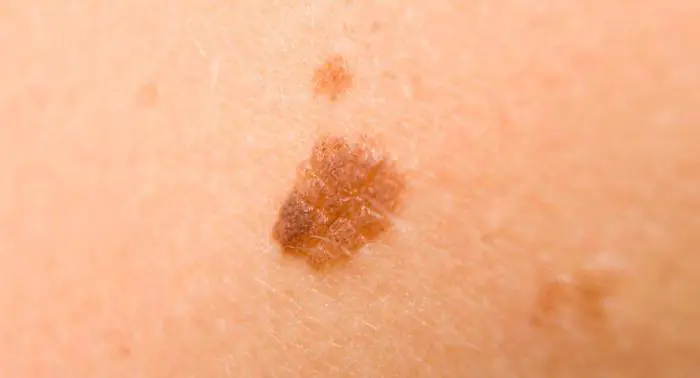
When to visit a specialist
Before wondering which doctor to contact with moles, you need to understand in what situations consultation with specialists is required. After all, under certain conditions, a nevus can turn into a malignant tumor. So, when a trip to the doctor is inevitable:
- The pigment spot on the skin is asymmetrical.
- The edges of the mole are uneven. In a normal nevus they are neat and clearly defined.
- A small wound on a mole bleeds heavily.
- The nevus has become a different color. As a rule, benign formations do not change their color.
- The size of the pigment spot began to gradually increase. Under normal conditions this should not happen.
- The surface of the mole has become rough, peeling and cracking. In such cases, unpleasant sensations may appear, such as burning or itching.
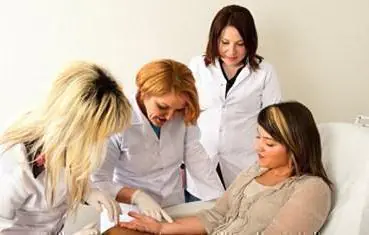
Which doctor should I contact about a mole?
So, if the nevus begins to gradually change, then it is worth visiting a doctor. After all, such phenomena indicate that processes have been launched in the body that contribute to the development of skin cancer. In this case, folk remedies will be useless. Only a specialist with extensive experience will help cope with the disease.
If moles bother you, which doctor should you consult? Each clinic has all kinds of specialists: cardiologists, dermatologists, therapists, ophthalmologists, and so on. Which one of them is able to help?
Moles are pigment spots created from cells with a certain pathology. It follows that the first thing you should do is visit a dermatologist. This specialist deals with the treatment of diseases associated with the skin. A dermatologist must conduct an initial examination using a dermatoscope, refer the patient for tests, and then make a diagnosis. Only after a thorough examination of the nevus will the dermatologist decide which specialist the patient should be referred to.

who is next
If the mole is not dangerous and does not need to be removed, then you can observe it at home. In this case, the nevus does not threaten human health and life, and is also not dangerous for melanoma.
But which doctor should I show a mole if it degenerates into a malignant neoplasm? In such a situation, a dermatologist can refer the patient to such highly specialized specialists as a breast oncologist, oncodermatologist, or surgeon.
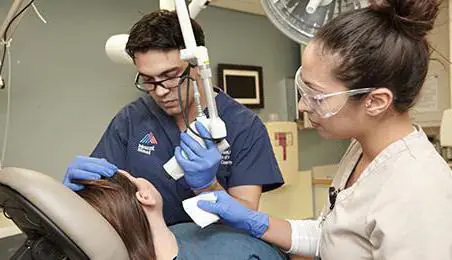
What can a surgeon do?
So, we figured out which doctor to go to for moles. If the clinic does not have highly specialized specialists, then the dermatologist, after the initial examination, can refer the patient to a surgeon. Only he determines exactly how the tumor will be treated. It is worth noting that the decision depends on the specific case. Most often, an operation is prescribed during which the mole is excised with a scalpel. This method is radical and at the same time irreplaceable.
It should be noted that in cases where the nevus is malignant, the surgeon can remove not only it, but also all those formations that can provoke a relapse. After this, scars and small scars will most likely remain on the body.
There are other ways to treat problematic nevi. The method of laser surgery, as well as electrocoagulation of tumors, has been used for a long time. Of course, such procedures are carried out only on a paid basis. But after them there are no scars or scars. Now you know which doctor removes moles. As practice shows, it is not worth contacting cosmetologists with such a problem, since they do not treat diseases.
Subspecialty specialists
What to do if there are malignant moles on the body? Which doctor should I contact in this case? Most often, they are referred for consultation to an oncodermatologist. This doctor specializes in skin diseases caused by pathology. The most dangerous and fairly common disease is melanoma. After a thorough examination, the specialist decides whether to remove or leave the mole.
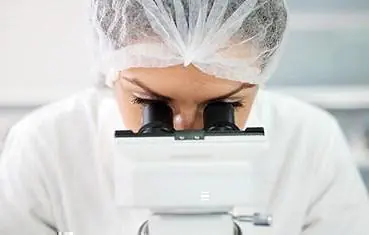
If the nevus is located in the breast area of women, then they should be examined by a mammologist. He also conducts all necessary studies, including histological ones. A consultation with a dermatologist and mammologist allows you to determine whether a mole is dangerous. However, it should be remembered that not every nevus can degenerate into malignant. However, a woman should be examined at least once every 6 months.
Finally
Which doctor should I contact for moles if the clinic does not have a dermatologist? In this case, you can consult a therapist. If a child has a problematic nevus, then you should seek help from a pediatrician. If a mole has begun to degenerate and its appearance is in doubt, then you should not rush to see a cosmetologist. In such situations, careful research is required. This is not done in beauty salons. In addition, a cosmetologist does not have the right to remove such nevi. It is better not to neglect your health, but to immediately seek help from a doctor.
Birthmarks are present on the body of every person. Basically, these are benign growths with a regular round or oval shape. They can be flat or convex in volume, and in color - from light flesh tone to dark brown. For some, nevi decorate the body and symbolize inner strength, speaking about character; for others, they interfere with life and pose a threat to health, especially if the mole bleeds.
Why does a mole bleed?
Healthy birthmarks have a stable size and color. But if blood engorgement suddenly occurs, or bleeding appears, this is a sign of concern. There are two reasons for the formation of blood fluid in a nevus - mechanical injury and the course of pathology.
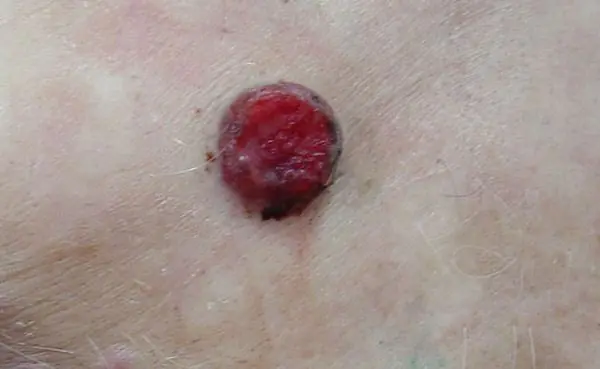
Injury to nevus
This phenomenon occurs if a person accidentally touches a birthmark while washing the body, dressing, or playing. If the stain is torn off, there will definitely be blood. Statistics show that birthmarks are most often picked off by children and women. Men have to deal with cuts while shaving, bathing, and changing clothes.
Here are the most common situations of injury to nevi in women:
- touching with a handbag;
- wearing jewelry incorrectly;
- stripping during hair removal;
- grazing with a long nail;
- combing.
In children the reasons are identical. In addition, they may have unsuccessful play with peers or be scratched by cats and dogs. According to statistics, children often damage such formations in their sleep.
Pathological causes
If blood fluid oozes, and there was no previous injury, there is a high probability of an inflammatory process in the tissues. He caused the bleeding. If the mole was torn off, in the patient's opinion, for no particular reason, the tissue may have become necrotic.
Types of mole injuries
The lion's share of patients mistakenly assume that such injuries can only be dangerous if the tumor is cut off. But medical removal is considered the safest, since during the therapy all parts of the nevus are cut out.
Poor consequences and prognosis can overtake the patient in the following practical situations:
- regular rubbing of the birthmark with jewelry, underwear, and clothing;
- scratching when unsuccessful scratching occurs;
- excess pressure factor, if a person wears a belt, abuses tight clothes, uncomfortable shoes;
- cutting when shaving.
A person is not always able to notice on his own that he has caused damage to a birthmark. Therefore, it is necessary to monitor the process of pigmentation of nevi and make timely visits to the doctor.
Why is bleeding from a mole dangerous?
Moles are traditionally benign formations. Therefore, they themselves do not pose any danger, at least as long as their shape, color and size remain the same. If some changes begin to occur, this may be a signal that the birthmark has degenerated into a malignant tumor. And this already requires medical intervention. If there are moles on the human body that suddenly begin to change, you need to visit a doctor, get tested and undergo a course of therapy.
How to stop bleeding at home
If the mole is filled, before the ambulance arrives (in serious situations) or goes to the clinic, it is necessary to carry out home tactics to prevent the infection from getting inside.
Here's what you need to do to stop the bleeding process.
- Wash your hands and disinfect them with alcohol.
- Wear sterile medical gloves.
- Treat the resulting wound with hydrogen peroxide, applying it to a clean cotton pad.
- To stop the bleeding, a bandage is applied to the affected area for a period of 15-20 minutes.
- Then the wound is re-lubricated with Chlorhexidine solution.
- In order for the damaged area to heal as quickly as possible, it is necessary to lubricate it with zinc-based ointment or calendula-based infusion.
As the area heals, a crust will form. It is forbidden to rip it off yourself.
It is important to know! To avoid penetration of pathogenic microorganisms into the growth or the place left behind it, you can treat it with iodine, brilliant green, or manganese solution. If a piece accidentally comes off from a growth, you should not try to tear off the remaining part yourself - consult a doctor. He will order a histological analysis and tell you what to do next.
The duration of the recovery process is about 20 days.
What are they doing at the hospital?
Blood at the site of a mole traditionally requires seeing a doctor, especially if the damage is significant. The doctor prescribes tests (tissue biopsy, histology) and, if there is significant tearing, takes measures for removal.
The modern medical field is ready to offer the following methods for eliminating birthmarks:
- electrocoagulation (elimination of formation is carried out using current, there is a possibility of scars, so the technique is relevant in the treatment of moles located in inconspicuous areas);
- radiotherapy (the procedure does not involve infection, therefore in practice it is used especially often; scars as a consequence are likely in isolated situations);
- laser therapy (is the most common manipulation for removing growths, since it does not cause pain and does not leave scars);
- elimination with liquid nitrogen (the birthmark is frozen, as a result, old cells die and fall off on their own);
- surgical intervention (removal is performed using a medical scalpel, indicated for large tumors located in the deep layers of the skin).
Which doctor should I contact?
If blood appears in the area of formation, this can cause adverse consequences, including death (in the absence of timely treatment measures).
Here are several types of growths that must be demonstrated to a dermatologist:
- giant pigmented mole;
- birthmark like papilloma;
- borderline neoplasm with pigment accumulation;
- nevus of dysplastic type;
- blue nevus;
- nevus of Ota.
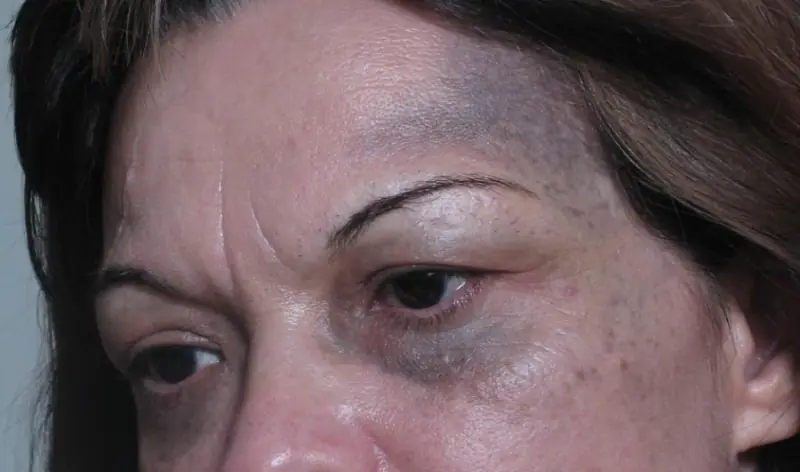
When a mole bleeds, the phenomenon itself does not pose any danger, even if it continues for a long period. This indicates damage to a large number of small blood vessels. However, if there is a noticeable change in shape, size, or color, a consultation with an oncologist is required. After all, a degenerated nevus is the source of the formation of a cancer-type tumor.
Prevention of bleeding from moles
The fact of damage to a mole is not noticeable from the first stage of damage. It makes itself felt in the process of starting the inflammatory process. In order to minimize the likelihood of an ordinary mark degenerating into a malignant formation, it is worth paying attention to a number of methods.
- Reduce contact with moles to prevent mechanical changes.
- Using the patch as an effective preventive measure against stripping. This will wean the patient from picking at the growth.
- If the nevus is located in the leg area, shoes are selected so that its impact on the growth area is minimized.
- Constant monitoring of hormonal levels is the key to successful therapy for nevus.
- An important role is played by preventing the abuse of ultraviolet rays in solariums and outdoors.
Thus, if bleeding comes from a mole, you can stop it at home, but to avoid negative consequences, you should consult a doctor.
The appearance and degeneration of moles is fraught with many mysteries. But don't be afraid of it. Their number and size on the body are different. No two birthmarks are exactly alike. The first nevi appear at birth, the number on the body increases with age.



